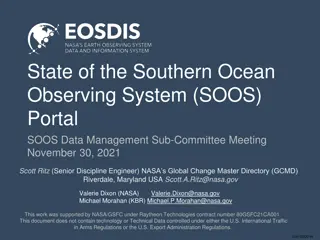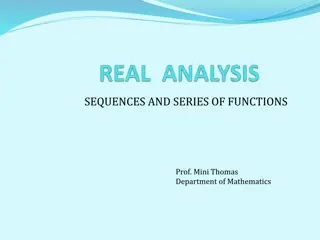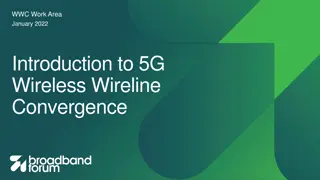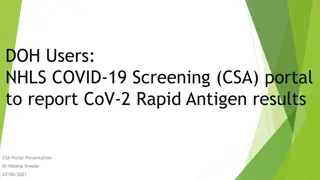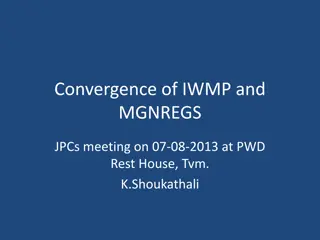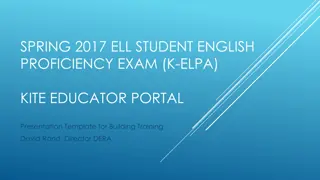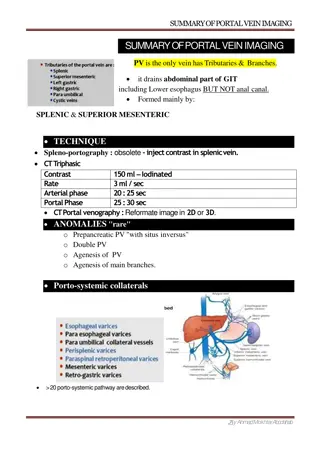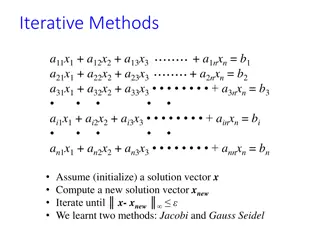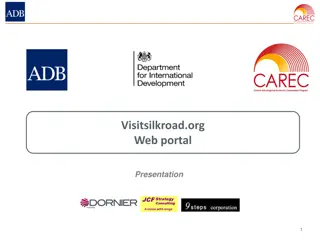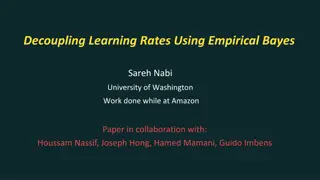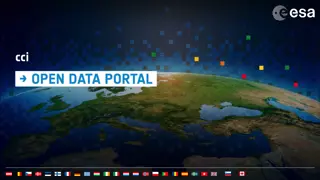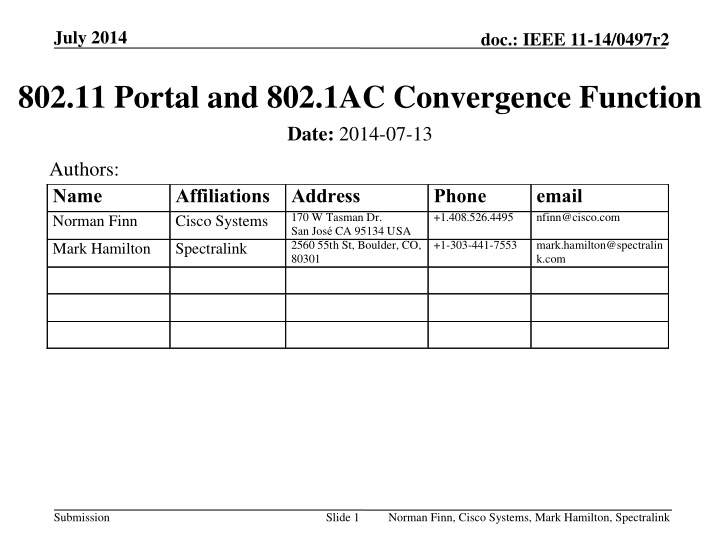
IEEE 802.11 Portal Convergence Function in July 2014
Explore the IEEE 802.11 Portal Convergence Function presented in July 2014 by Norman Finn from Cisco Systems and Mark Hamilton from Spectralink. The document discusses the model for IEEE 802.11 Portal Convergence Function appearing in IEEE P802.1AC-REV Clause 12.2.1, currently undergoing balloting in the IEEE 802.1 Interworking Task Group. It also showcases examples of physical networks, layering models, and architectural approaches related to IEEE standards.
Download Presentation

Please find below an Image/Link to download the presentation.
The content on the website is provided AS IS for your information and personal use only. It may not be sold, licensed, or shared on other websites without obtaining consent from the author. If you encounter any issues during the download, it is possible that the publisher has removed the file from their server.
You are allowed to download the files provided on this website for personal or commercial use, subject to the condition that they are used lawfully. All files are the property of their respective owners.
The content on the website is provided AS IS for your information and personal use only. It may not be sold, licensed, or shared on other websites without obtaining consent from the author.
E N D
Presentation Transcript
July 2014 doc.: IEEE 11-14/0497r2 802.11 Portal and 802.1AC Convergence Function Date: 2014-07-13 Authors: Name Norman Finn Affiliations Address Cisco Systems Phone +1.408.526.4495 email nfinn@cisco.com 170 W Tasman Dr. San Jos CA 95134 USA 2560 55th St, Boulder, CO, 80301 +1-303-441-7553 mark.hamilton@spectralin k.com Mark Hamilton Spectralink Submission Slide 1 Norman Finn, Cisco Systems, Mark Hamilton, Spectralink
July 2014 doc.: IEEE 11-14/0497r2 Abstract A model is presented for the IEEE 802.11 Portal Convergence Function to appear in IEEE P802.1AC- REV Clause 12.2.1, now being balloted in the IEEE 802.1 Interworking Task Group. Submission Slide 2 Norman Finn, Cisco Systems, Mark Hamilton, Spectralink
July 2014 This is an example of a physical network doc.: IEEE 11-14/0497r2 802.3 802.3 AP 1 AP 2 Two physical boxes, commonly (but inaccurately) called APs, connected by an IEEE 802.3 link. Two clients of AP 1 shown, two wireless and one wired clients of AP 2 not shown. No VLANs. Submission Slide 3 Norman Finn, Cisco Systems, Mark Hamilton, Spectralink
July 2014 Layering doc.: IEEE 11-14/0497r2 In the ISO layering model, a DATA.request is presented by a higher layer to a lower layer, and a DATA.indication is presented by a lower layer to a higher layer. In all further diagrams in this deck, the higher layer is closer to the top of the slide, and the lower layer closer to the bottom. Submission Slide 4 Norman Finn, Cisco Systems, Mark Hamilton, Spectralink
July 2014 A standard view of that same network in 802.11 today doc.: IEEE 11-14/0497r2 AP portal MAC PHY AP MAC MAC MAC PHY MAC PHY Distribution System (DS) PHY PHY Non-AP STAs This is similar to IEEE 802.11-2012, Figure R-1, but drawn with request down indication up rigorously applied. The DS has three users, two APs and a portal, so is shown passing behind a MAC. AP STA 1 AP STA 2 802.3 Submission Slide 5 Norman Finn, Cisco Systems, Mark Hamilton, Spectralink
July 2014 One possible 802.1AC-to-portal architecture doc.: IEEE 11-14/0497r2 AP portal 802.1Q bridge relay MAC MAC MAC PHY MAC PHY MAC PHY MAC PHY Distrib. System (DS) PHY PHY Non- AP station end station AP STA anything, e.g. 802.3 802.3 A connecting link is required, because the portal uses a SAP; it does not provide one. Therefore an 802.1AC convergence layer specific to 802.11 is not necessary. Submission Slide 6 Norman Finn, Cisco Systems, Mark Hamilton, Spectralink
July 2014 But, there is an alternate approach. doc.: IEEE 11-14/0497r2 AP portal 802.1Q bridge relay MAC MAC MAC PHY MAC PHY MAC PHY MAC PHY Distrib. System (DS) PHY PHY Non- AP station end station AP STA anything, e.g. 802.3 802.3 This interface is defined. It is the DS_SAP, described in IEEE Std 802.11- 2012 Annex R. Submission Slide 7 Norman Finn, Cisco Systems, Mark Hamilton, Spectralink
July 2014 So, another representation could be One example (of many) of a portal doc.: IEEE 11-14/0497r2 802.1Q bridge relay .1AC MAC AP MAC MAC MAC PHY Distrib. System (DS) PHY PHY PHY Non- AP station end station AP STA 802.3 That is, the 802.1AC Clause 12.2.1 portal convergence function is not an interface to a portal; .1AC 12.2.1, plus a bridge relay function, is an example of a portal. .1AC 12.2.1 connects the ISS to the DS_SAP. Submission Slide 8 Norman Finn, Cisco Systems, Mark Hamilton, Spectralink
July 2014 Tasks for 802.1AC doc.: IEEE 11-14/0497r2 Rewrite 802.1AC Draft 0.2 Clause 12.2.1 to provide a convergence function that maps the 802.1AC ISS to the 802.11 DS_SAP. Submission Slide 9 Norman Finn, Cisco Systems, Mark Hamilton, Spectralink
July 2014 Tasks for 802.11 doc.: IEEE 11-14/0497r2 Perhaps none, perhaps 802.11 should consider making the DS_SAP normative. - Rationale would be so that .1AC can reference normative text in 802.11 Making the DS_SAP normative does not define the underlying distribution system. Making the DS_SAP normative simply imposes a set of behavior requirements on a distribution system. - 802.11 has a precedent of stating such requirements in normative text Submission Slide 10 Norman Finn, Cisco Systems, Mark Hamilton, Spectralink




